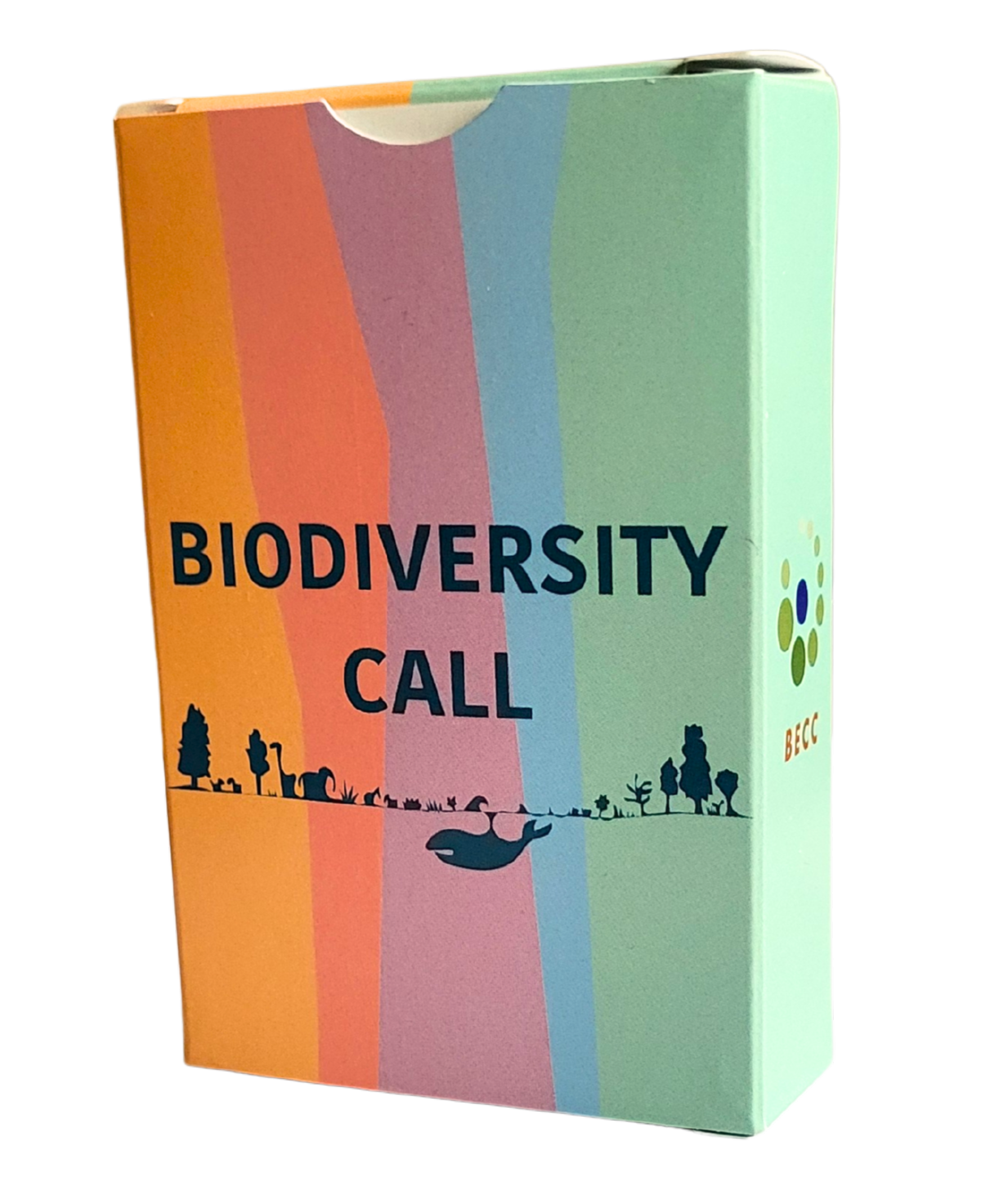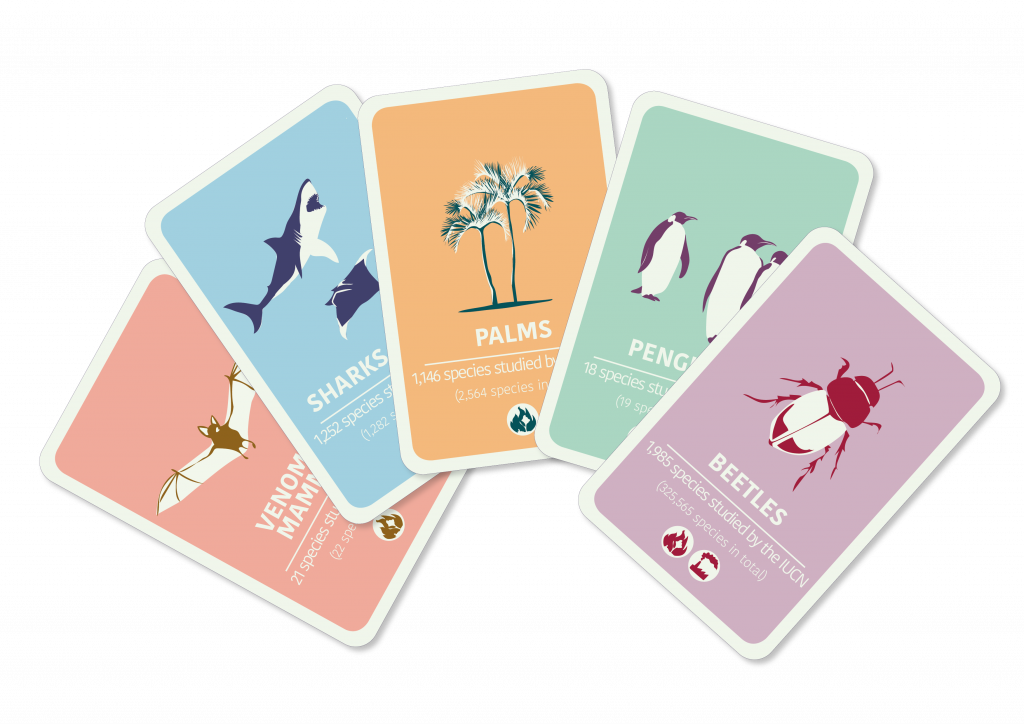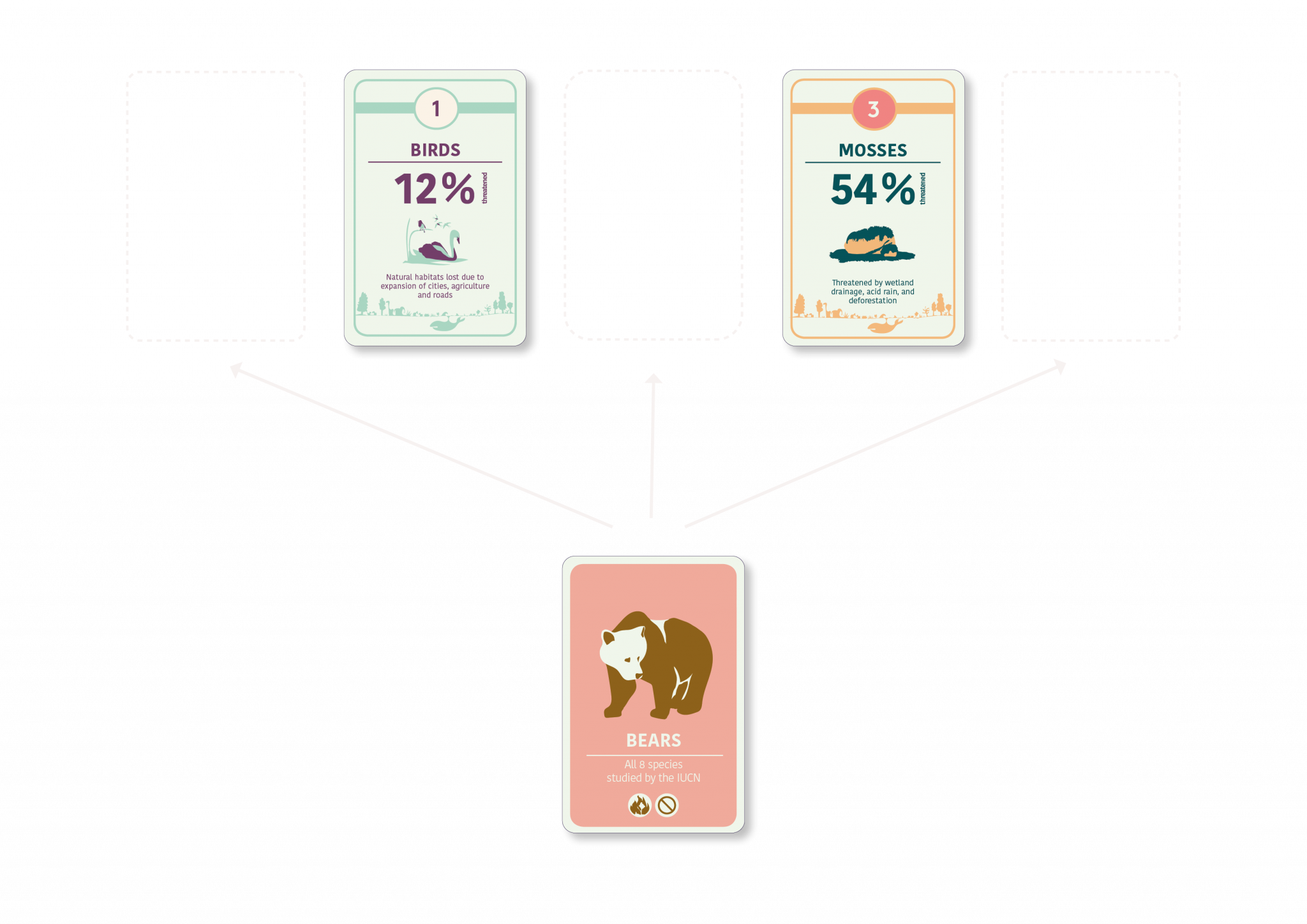ABOUT THE GAME
From big cats and whales, to mosses and butterflies: How are Earth’s species really doing? The answers may surprise you. In Biodiversity Call, the players get to explore how different species groups are coping and what threatens their survival. Fast-paced, visual, and grounded in real research, the game reveals the hidden patterns behind global biodiversity loss, and best of all; the rules are so easy that it just takes a minute to get started.
The game is perfect for classrooms, families, and anyone curious about the state of the natural world. At work, it’s a great conversation starter!
Biodiversity Call was created in collaboration with Biodiversity and Ecosystem services in a Changing Climate (BECC); a strategic research area that engages about 350 researchers at Lund University and the University of Gothenburg.
Biodiversity Call is published by Klimatkoll Guldheden AB in Sweden.
LAYOUT & ILLUSTRATIONS: Yrsa Dahlman







